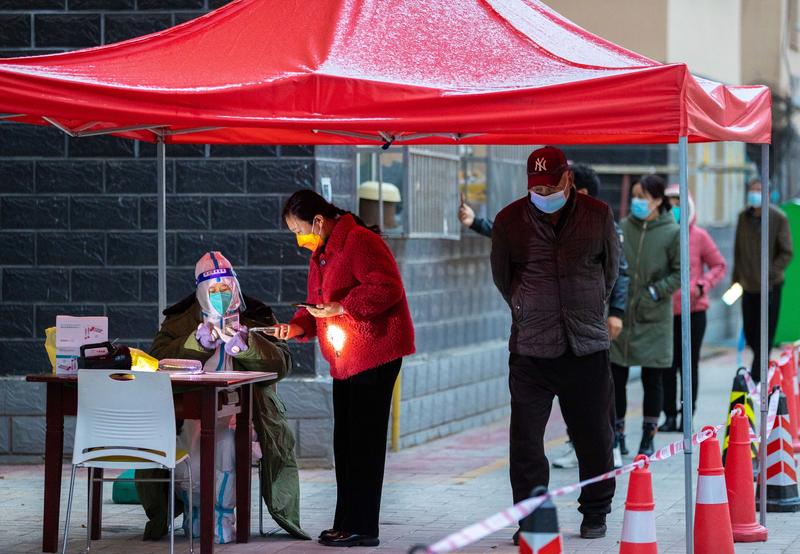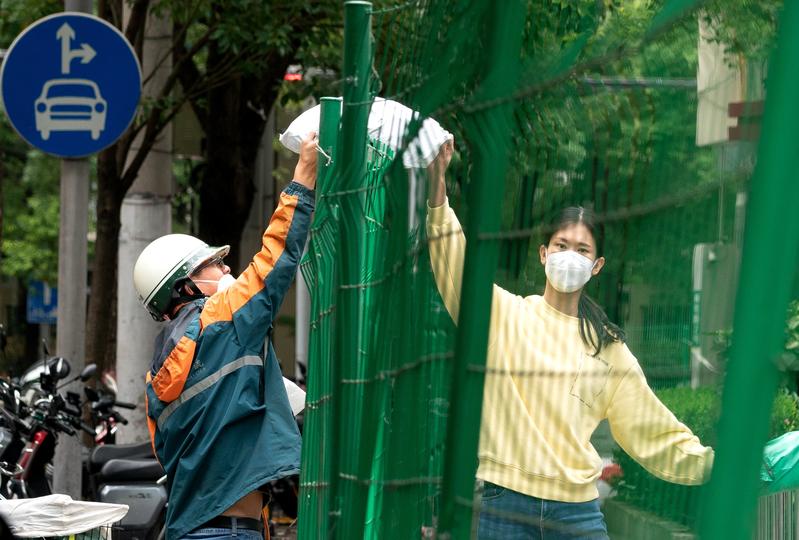Inner Mongolia, Xinjiang see tallies rise as Beijing detects transmission chains
 Residents undergo nucleic acid testing in Hohhot's Yuquan district, Inner Mongolia autonomous region, on Sunday. The regional capital has reported nearly 2,800 COVID-19 cases since Sept 28. (DING GENHOU / FOR CHINA DAILY)
Residents undergo nucleic acid testing in Hohhot's Yuquan district, Inner Mongolia autonomous region, on Sunday. The regional capital has reported nearly 2,800 COVID-19 cases since Sept 28. (DING GENHOU / FOR CHINA DAILY)
With growing COVID-19 infections reported in the Inner Mongolia and Xinjiang Uygur autonomous regions on the first workday after the seven-day National Day holiday, local authorities have continued to implement strict epidemic prevention and control measures as well as make all efforts to meet daily needs.
Inner Mongolia reported 207 locally transmitted COVID-19 cases and 424 asymptomatic cases on Saturday, according to the regional health commission.
Among them, 188 confirmed and 376 asymptomatic cases were detected in the regional capital Hohhot, bringing the current tally in the latest outbreak to 723 and 2,066, respectively.
"We are facing a severe and complex epidemic situation that requires the combined efforts of the whole city to fight," Liu Yuanjun, an official with the city's health commission said at a news conference Sunday. "The city conducted a new round of mass nucleic acid testing on Sunday."
More personnel and facilities have been allocated to take care of medical needs, according to Liu.
The local government also urged residents not to leave the city to avoid the spread of the virus to areas outside the region.
"Those who have to leave for special reasons should provide three negative nucleic acid test results taken within five days," said Guo Quanbin, an official with Hohhot's transportation bureau.
"Currently, all interprovincial and intercity road passenger services have been suspended and inbound and outbound flights and trains have been significantly reduced."
In the Xinjiang Uygur autonomous region, there is still a high risk of hidden transmission in communities, which could lead to a rebound, Erzat Zada, deputy director of the region's health commission said at a news conference on Saturday.
 A courier hands a package to a resident at a community designated as medium risk for COVID-19 in Shanghai on Saturday. (GAO ERQIANG / CHINA DAILY)
A courier hands a package to a resident at a community designated as medium risk for COVID-19 in Shanghai on Saturday. (GAO ERQIANG / CHINA DAILY)
The region reported 53 locally transmitted COVID-19 cases and 383 asymptomatic cases on Saturday, according to the regional health commission.
"In the past two days, we have seen a rapid increase of infections due to the highly transmissible nature of the Omicron subvariant, which were caused by hidden transmission before the infections were detected," said Ma Hemu, an expert with the region's disease control and prevention center.
"There are also some other existing problems, such as the inaccurate division of risk areas, shortage of staff members in community prevention and control work, improper processes during nucleic acid sample collection, disinfection, sample transportation and disposal of medical waste."
Beijing has reported 39 COVID-19 infections since Sept 29 as of Sunday afternoon, according to the Beijing Center for Disease Prevention and Control.
Liu Xiaofeng, deputy director of the center, said at a news conference on Saturday, that the cases involved 10 transmission chains in eight districts in the city.
Some people who returned to the capital after holiday trips failed to follow required measures, which added to the difficulty of current epidemic control and prevention work, the center said.
"The 10 transmission chains are all independent, and three transmission chains have reported zero new cases for at least five days, which means they are under control at present," Liu said.
Liu stressed that people who return to the capital after the holiday should strictly follow epidemic control and prevention measures, which can effectively reduce infection risks.
The Beijing government has asked residents to present a negative nucleic acid test result obtained within 48 hours, as well as a green health code before returning to the capital after the holiday. Upon arrival, nucleic acid tests should be taken twice within three days and recent returnees should not visit crowded places or dine with others for a week.
Those working in Beijing should obtain a 48-hour negative nucleic acid test result before returning to their workplaces.
Du Juan in Beijing contributed to this story.
Contact the writers at zhouhuiying@chinadaily.com.cn


